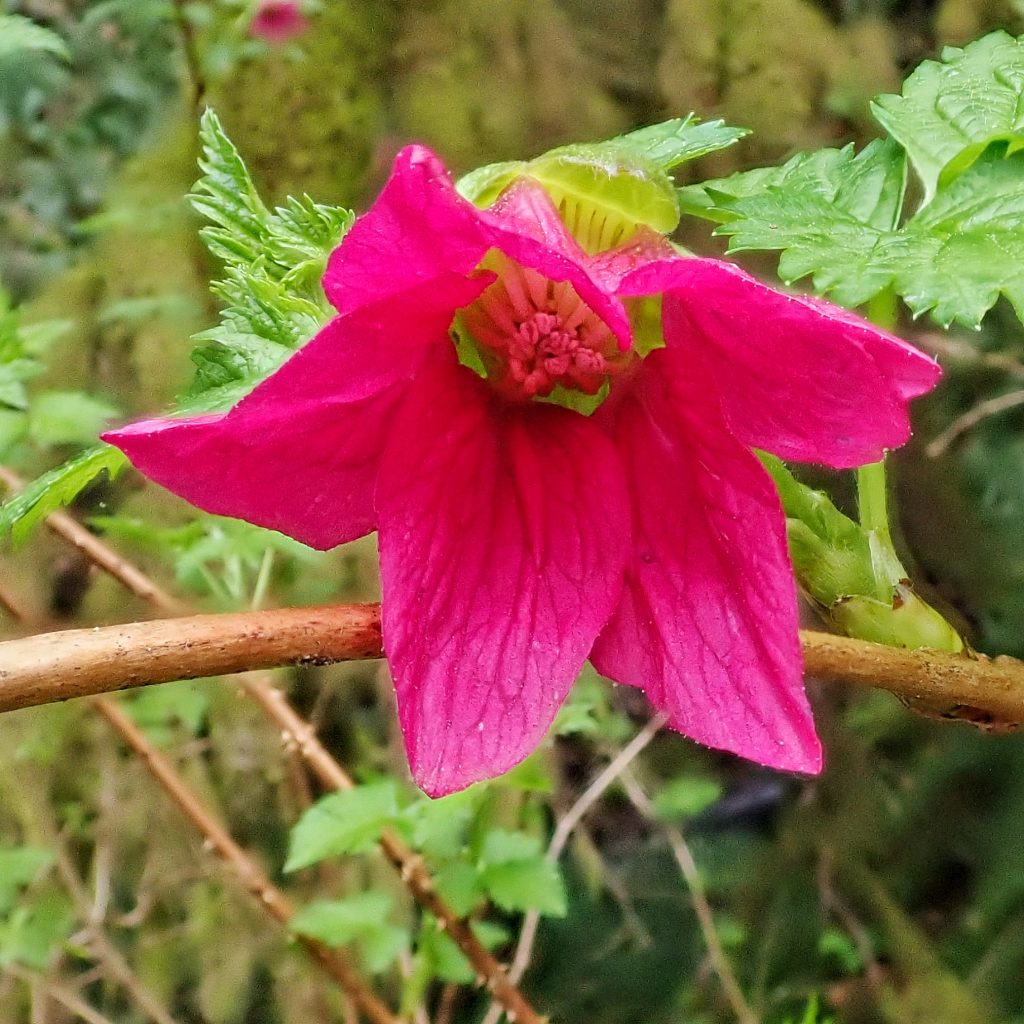
This native shrub is quite the useful member of the Rosaceae family, providing nearly year around food to various forest denizens. Each year it also provides the earliest large splashes of bright primary colors to delight the eyes of recreational naturalists and other woods ramblers. And it is an important recolonizer after fires or clearcutting, because not only is there an abundant seed bank already in the ground, ready to sprout after any disturbance, but the roots of the growing plants help to stabilize the soil and prevent erosion.
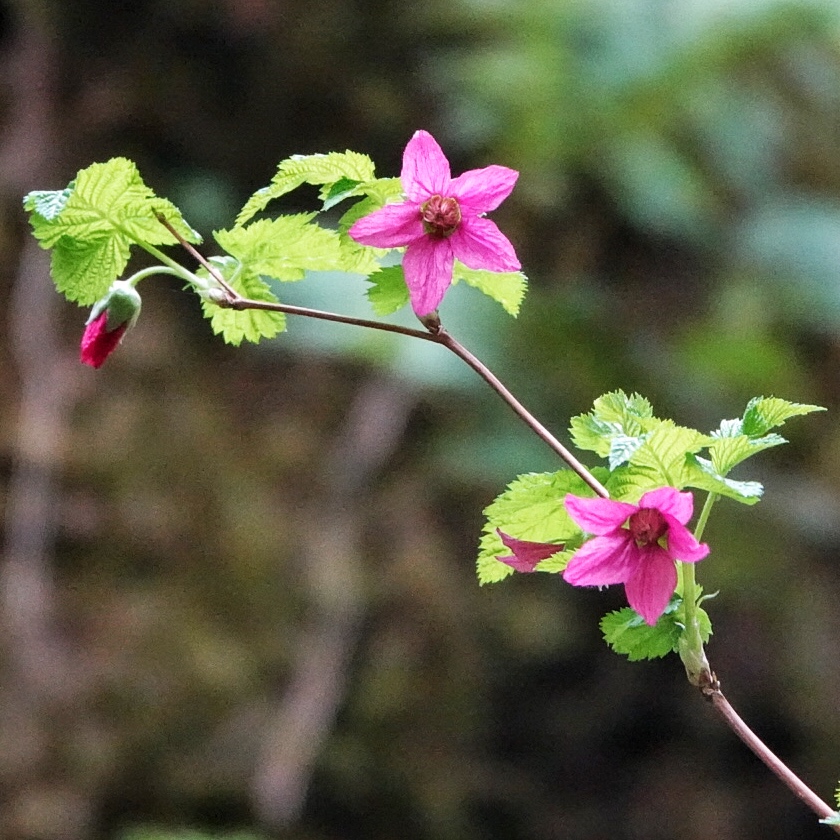
One finds many many different etymologies for the origin of the name Salmonberry (such as that it was because they ate it with salmon, or because the berry looked like salmon eggs and the color is similar to raw salmon flesh, or that the berries ripen when the spring chinook are running). But the Chinook people told a different tale. They said that when this plant was discovered Coyote was told to place a berry from it in the mouth of each salmon that he caught, to insure good fishing. Thus it was called klalilli, which was translated as salmonberry.

Indigenous peoples did favor it for eating with dried salmon, the high moisture content of this berry (which is the reason this was one of the few natural fruits that they didn’t dry) blending well with the parched fish. They also ate it with salmon roe, eulachon (smelt) oil, and on its own. And they peeled and ate the shoots, both raw and cooked.
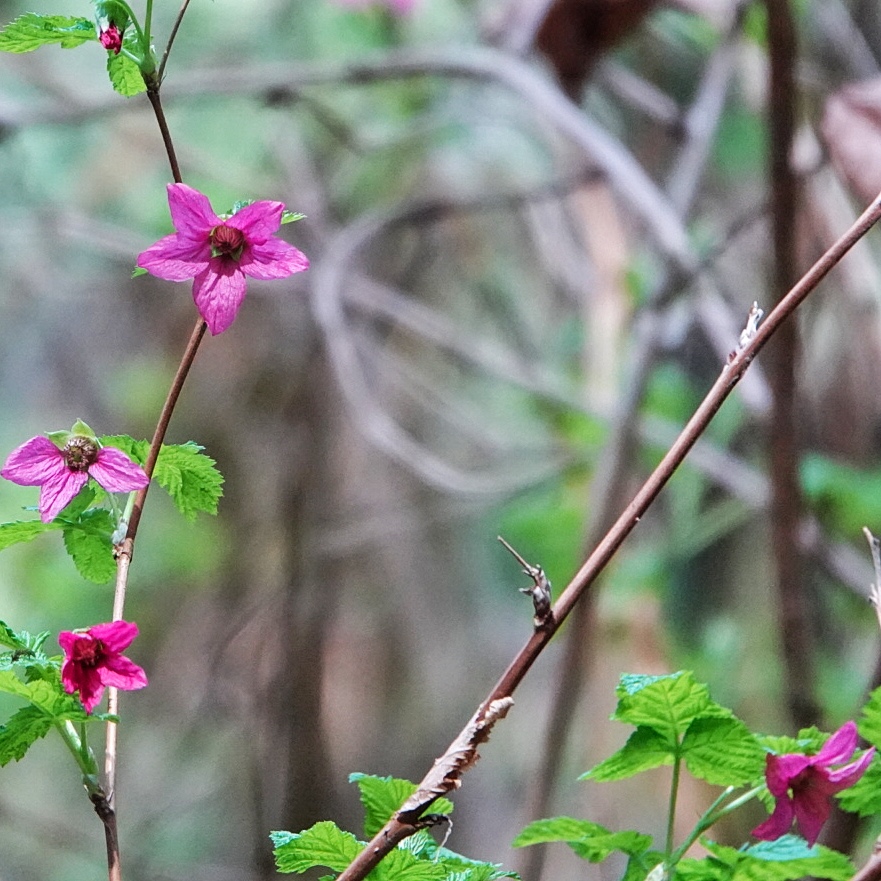
They also made extensive use of the plant for medicinal purposes. They used teas and infusions made from its roots and leaves to treat anemia, gastrointestinal disorders, toothaches, and to promote weight gain, as well as for pain relief from injuries and during labor.
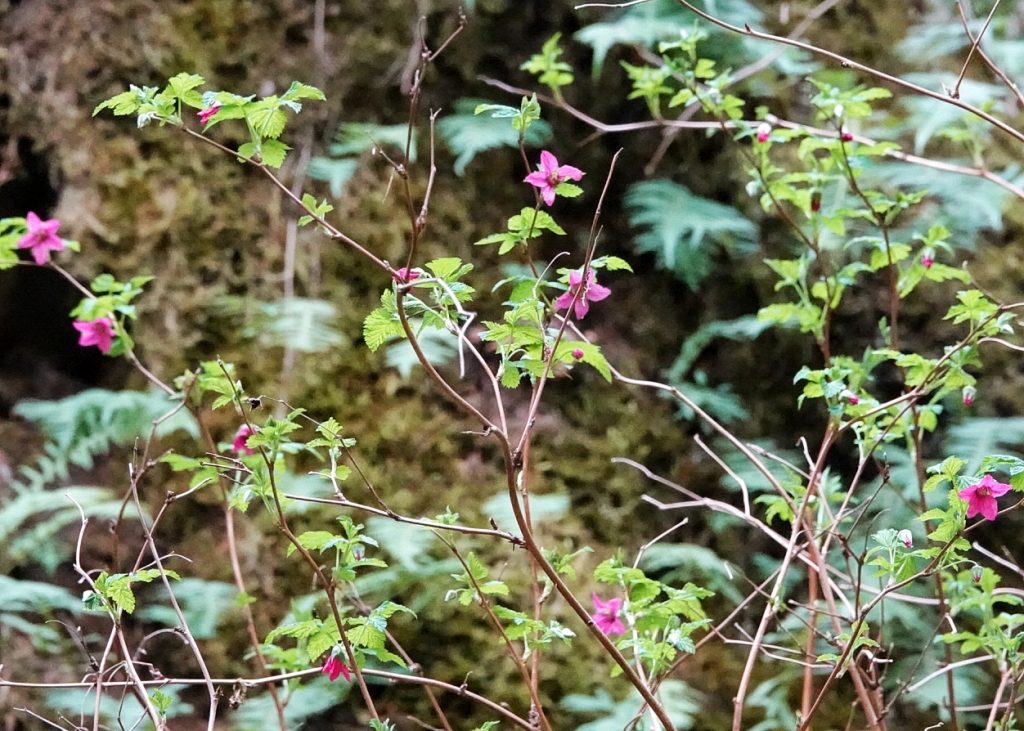
Because of their intimate association with this plant it figured in the Quileute calendar, having 2 moons (months) named after it. In April was the Salmonberry Sprouts Moon, and in June was the Salmonberry Moon, to celebrate the harvesting of these resources. And, because their arrival coincided with the first ripening of berries, in many coastal cultures Swainson’s thrush were known as salmonberry birds.
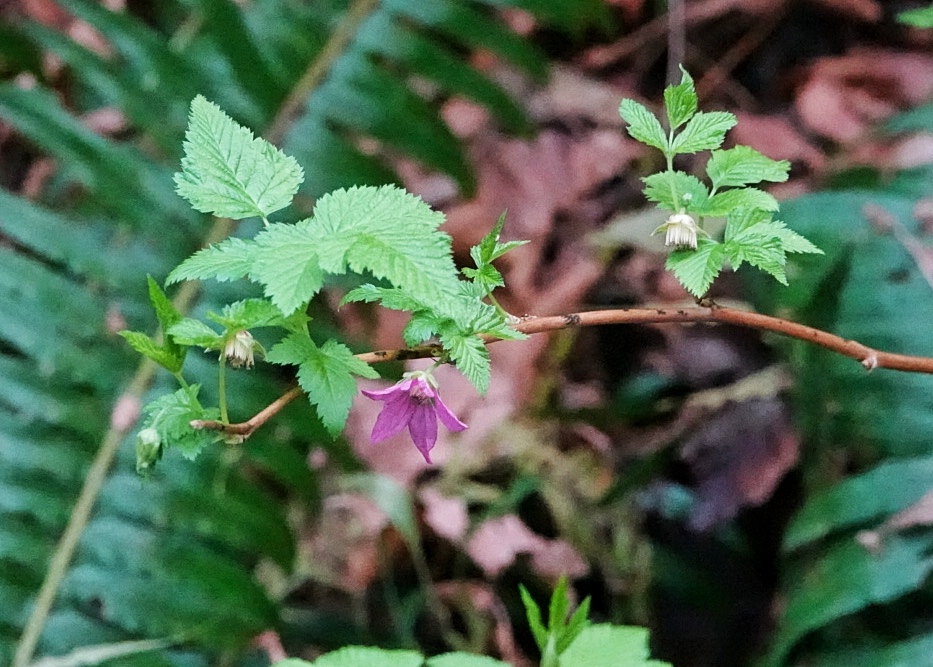
Before I started researching this I already had a sense of how ecologically important this species was, but I had no idea of how culturally important it was to the indigenous cultures of the PNW. With this knowledge I will look upon these plants, for which I already had a distinct fondness, with an even greater appreciation for their intrinsic significance within the historical landscape of our region.
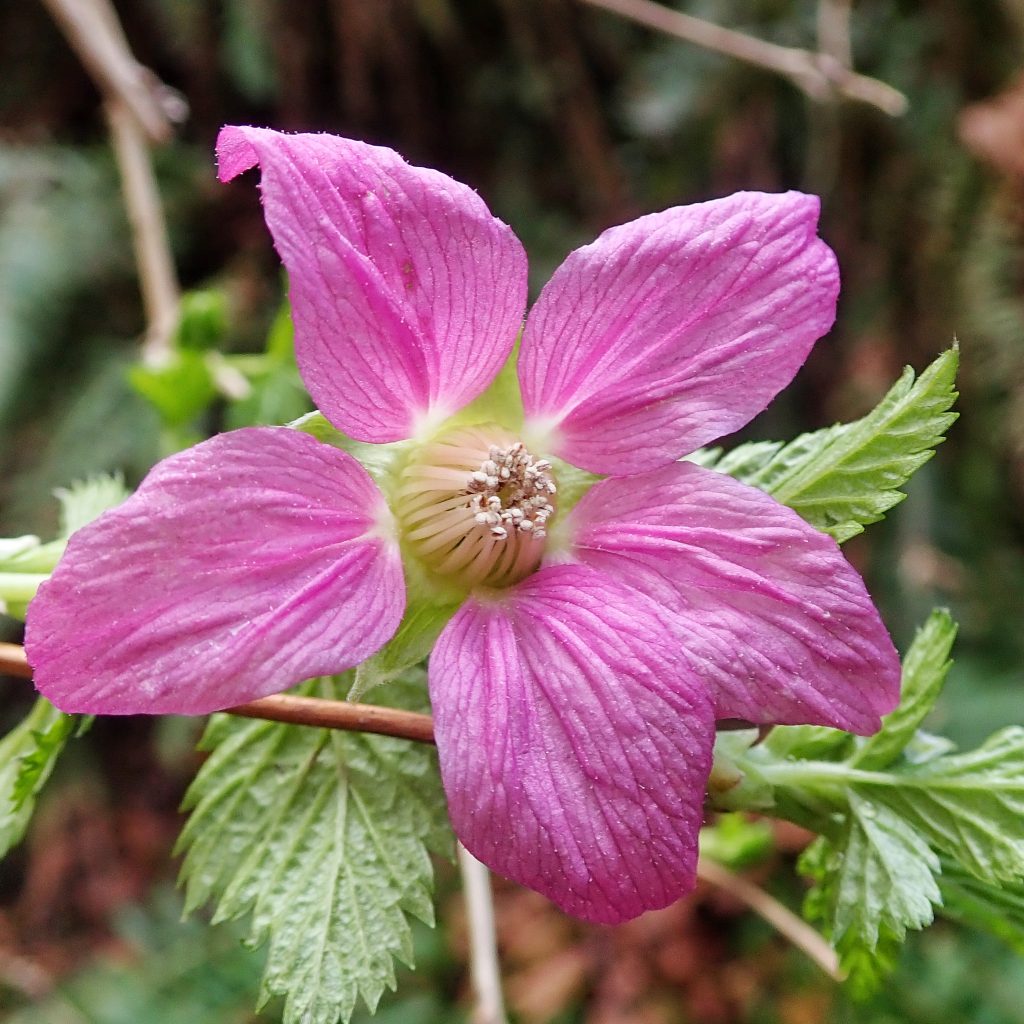
Description– Large shrub often forming thickets, thorns mostly on the lower half; leaves are alternating, with 3 leaflets per petiole; flowers forming in clusters on short branches, bright pink to purple, 5 petaled, with a multitude of stamens and pistils; berry is yellow orange to salmon or red orange.
Similar species-Other Rubus spp. have white flowers, and dark red to purplish berries; wild roses have hips rather than berries.
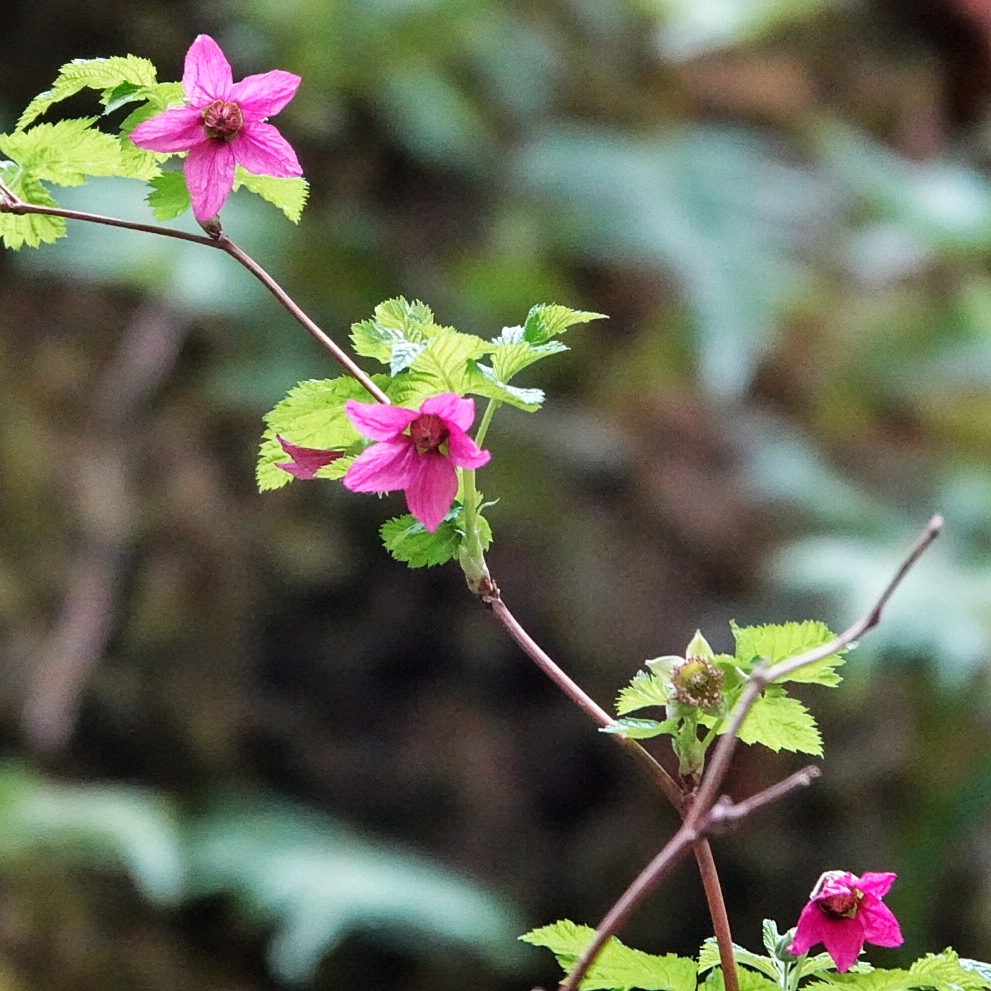
Habitat– Moist to mesic woods and forests, and along wetlands and watercourses, up to 5000’.
Range-Western North America, and Eastern Asia; primarily west of the Cascades in our region, as well as ne Oregon, nw California, ne Idaho, and nw Montana.
Reproductive timing– Flowers bloom March to May, and berries ripen beginning in May.
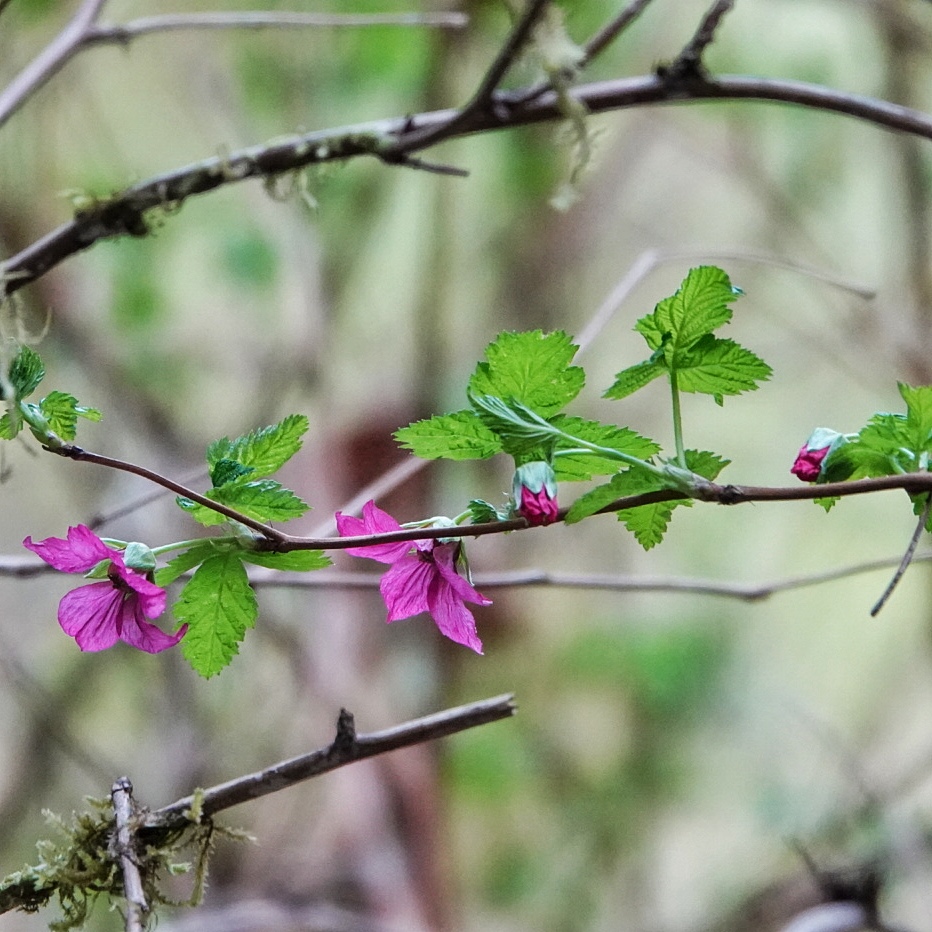
Eaten by-There are a variety of Lepidoptera which utilize this plant as a larval host, including the geometrid moths Ectropis crepuscularia, Sabulodes aegrotata, and Selenia alciphearia, the Noctuids Aseptis binotata, Cerastis enigmatica and Pseudorthodes irrorata, the Thyatrids Habrosyne scripta and Pseudothyatira cymatophoroides, and the Tortricid Argyrotaenia citrana. This is in addition to the many insects and hummingbirds which nectar at its flowers, the birds and mammals (especially the Pacific Jumping Mouse, which is strongly associated with this species) that depend upon its berries, and the grouse, pigeons, grosbeaks, thrushes, waxwings and sparrows which like to nibble the tender new shoots. And deer and rabbits eat the leaves.
Etymology of names– Rubus is the Latin word for blackberry/bramble. The specific epithet spectabilis means showy/spectacular in Latin, a reference to the showy clusters of flowers.
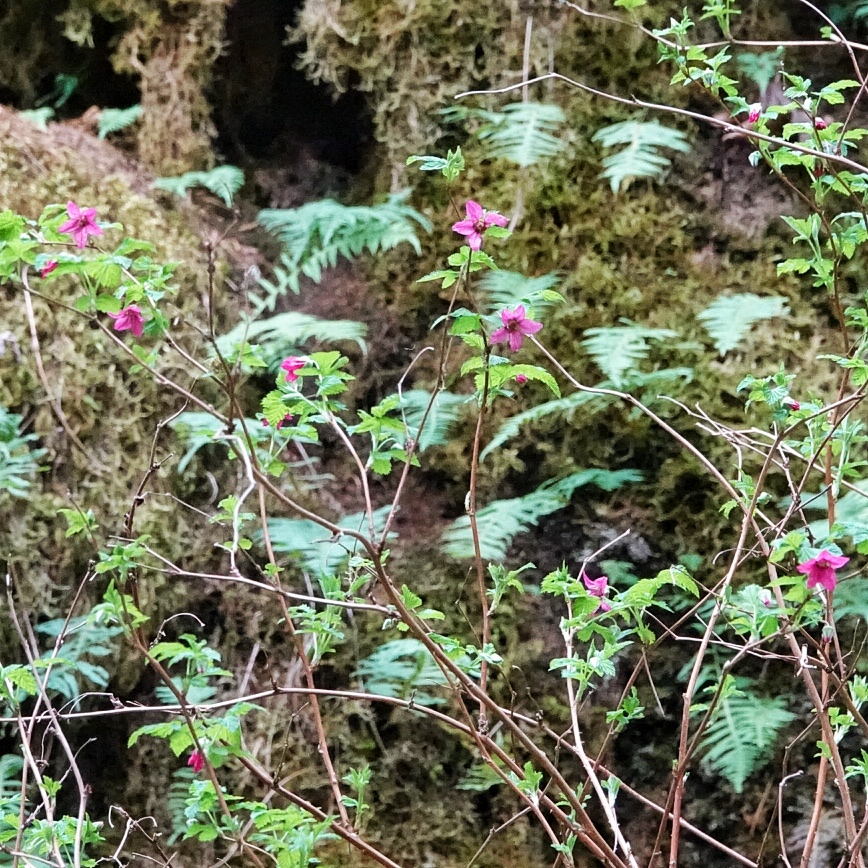
https://www.fs.fed.us/wildflowers/plant-of-the-week/rubus_spectabilis.shtml
http://nativeplantspnw.com/salmonberry-rubus-spectabilis/
https://www.fs.fed.us/database/feis/plants/shrub/rubspe/all.html
https://plants.usda.gov/plantguide/pdf/cs_rusp.pdf
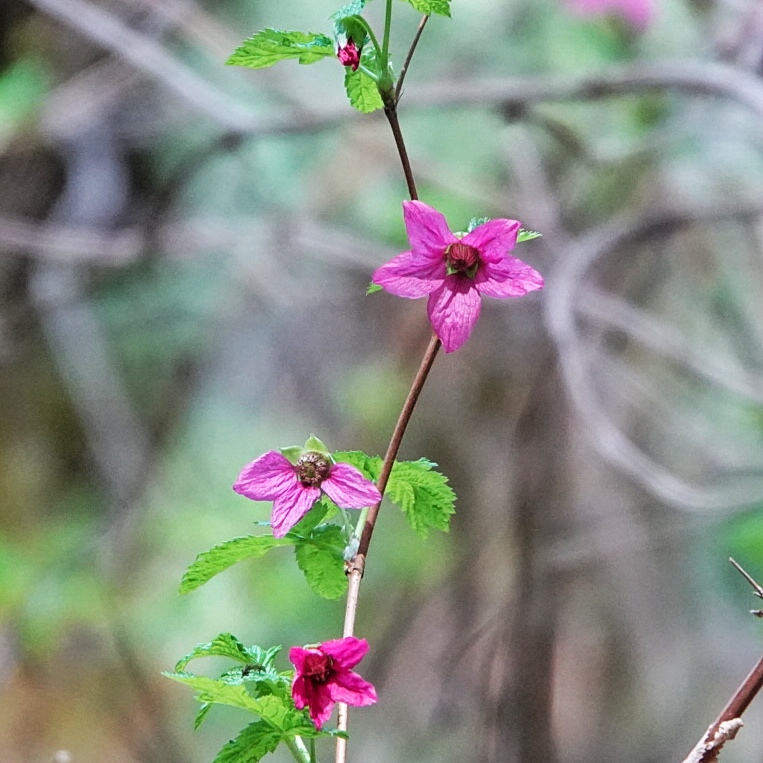
I took a hike through Trillium Falls (Orick, CA). I saw this from a distance and initially thought it was an old rose. Then I saw the flowers. There is no mistaking that rich color. Thanks for all the info on them. I appreciate it.
Always delightful to come across them. Fascinating to hear of their historical use!
Love this post. Thank you. These flowers are everywhere right now and they make every moment a bit happier ♡
Yes they do! Thank you!